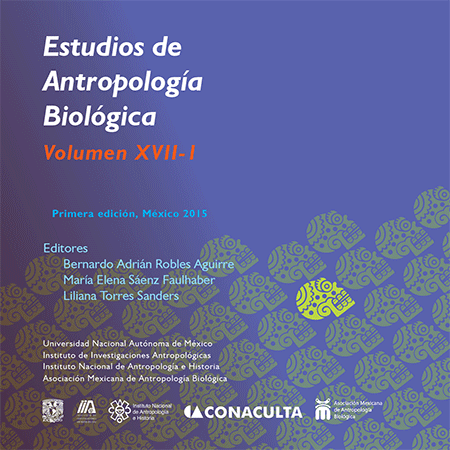What do we learn from past?: Health, lifestyle and urbanism in prehispanic, colonial and contemporary populations in Yucatan’s Peninsula
DOI:
https://doi.org/10.22201/iia.14055066p.2015.56835Keywords:
Health, living conditions, urbanism, FRX trace element analyses, Yucatecan populationAbstract
This prospective study compares the living conditions and nutrition among urban yucatecan populations over the centuries. To this effect, we use a combined pre-Hispanic urban series (Mayapán, Xuenkal, Kabah, Dzibanche, Dzibichaltun, Noh Bec and Kohunlich), along with colonial and recent cemetery collections from urban centers: an early colonial churchyard from Campeche and two post-colonial municipal cemeteries from Mérida (Cementerio General and cementerio de Xoclán). In these series, we study the frequencies and degrees of expression of four stress markers in male and female adults (over 15 years of age): porotic hyperostosis, cribra orbitalia, periosteal reaction and trauma. This information is complemented with results obtained for a part of the collections from trace element analyses (FRX), which informs about general trends in food consumption. The results are validated and discussed jointly within and among different socioculturals contexts. Despite the limitations of this type of general comparative approach, we posit that the infor-mation allows glimpses on the fluctuation of physiological stress in Yucatecan populations that follow historic process, like the European contact and colonization, modernization and medical advance.
Downloads
Downloads
Published
How to Cite
Issue
Section
License

http://creativecommons.org/licenses/by-nc-nd/4.0/


